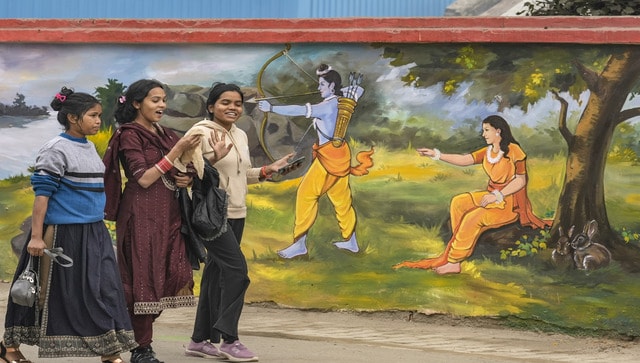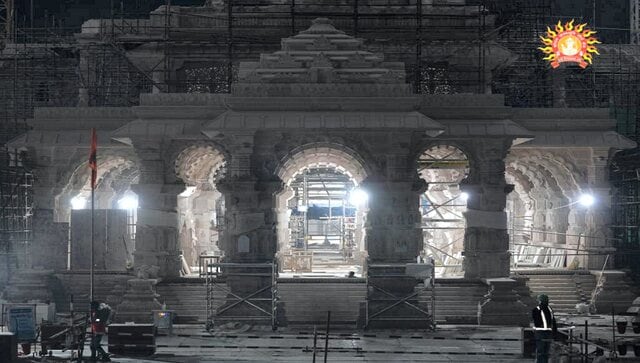Ram Mandir inauguration: How AI will help secure Ayodhya for 22 January event
Ram Mandir inauguration: How AI will help secure Ayodhya for 22 January event

Ayodhya is brimming with religious fervour ahead of the Pran Pratishtha ceremony of Ram Mandir on 22 January. The opening of the grand temple is expected to attract thousands of people, including saints and VVIPs.
The Uttar Pradesh government is leaving no stone unturned to secure the temple town for the ceremony. Anti-terrorism squad commandoes and bulletproof vehicles are already parked in the city. Artificial intelligence (AI) is also being used to enhance security and ensure the safety of VIPs, pilgrims and tourists who will come to Ayodhya.
Let’s take a look at the role of AI in boosting security in Ayodhya and how else the technology is being deployed for the Ram temple inauguration.
How AI will keep Ayodhya safe
AI surveillance has been deployed in Ayodhya to tackle suspicious activities and track down miscreants. Drones powered by AI technology are conducting aerial surveillance across the city, while AI-based anti-mine drones are being used to scan underground mines or explosives, according to a News18 report.
Besides drones, AI-integrated cameras will also help in keeping the temple town safe. Gurgaon-based artificial intelligence startup Staqu Technologies announced on Monday (15 January) that it will provide real-time security surveillance in Ayodhya through its AI-driven audio and video analytics platform Jarvis.
The software will monitor the event for threats and suspicious activities through tools such as facial recognition and number plate recognition, giving real-time alerts to authorities.

“Staqu’s AI-powered Jarvis platform will monitor the event for threats and suspicious activities, providing real-time alerts to the authorities using already installed cameras,” Atul Rai, co-founder and chief executive officer of Staqu Technologies, was quoted as saying by Business Standard.
The AI software will also use reverse facial recognition to identify objects and people on the basis of general inputs and movements. “Reverse facial recognition will enable police to search for a particular person across the city using a photograph. The software would also allow them to search for a person or an object based on attributes entered in text form,” Rai told Mint.
Jarvis has been installed in the already existing CCTVs in Ayodhya. These cameras wil cover popular hotspots including Kanak Bhawan, Hanuman Garhi, Shri Nageshwar Nath Mandir, Ram Ki Paidi and Ram Janmabhoomi, reported PTI news agency.
These cameras have access to a database of 8,00,000 criminals through Staqu’s Trinetra software which has facilitated the UP police department to digitise criminal records, as per the news agency. “This database assists Ayodhya in identifying any suspicious faces among the registered criminals with an accuracy rate of 99.7 per cent,” a press release from the company said.
Trinetra tool reportedly combines facial recognition with audio cues to track a criminal.
“Jarvis platform empowers surveillance cameras to perform attribute-based searches, identifying individuals from a crowd based on specific attributes such as clothing, colour, accessories, or accompanying children etc.,” the press release added.
As per the company, the software is also capable of conducting footfall analysis and detecting incidents of violence at the grand event, reported Business Standard.
Rai told Mint that the AI surveillance in Ayodhya is currently on a one-month pilot project. “The pilot’s success will pave the way for a full-fledged implementation of the project in the city in the future”.
What else is AI being used for?
AI will not just help keep Ayodhya safe but also improve the telecom connectivity experience for visitors. As per an Economic Times (ET) report, the Department of Telecommunications (DoT) is leveraging AI and machine learning (ML) to provide seamless connectivity to those attending the Ram temple inauguration.
DoT is carrying out a predictive analysis based on the number of people projected to attend the consecration ceremony to guide telcos on how many extra mobile sites to put up and which technology –2G, 4G or 5G – to offer.

These mobile towers can be shifted depending on the movement of the crowd. The telecom department has also established a war room to track all telecom activities in and near Ayodhya.
“With the help of AI/ML, we have been able to decide which technology tower and what frequency band is best to serve the people,” an official told ET. “The spectrum bands have been utilised in a manner that will offer great upload speeds along with downloads, as people are expected to upload videos from the venue.”
Steps are also being taken to protect telecom networks from cyber attacks. “We know that network security has to be paramount as the telecom infrastructure may be vulnerable to cyber attacks,” the official added.
With inputs from agencies
